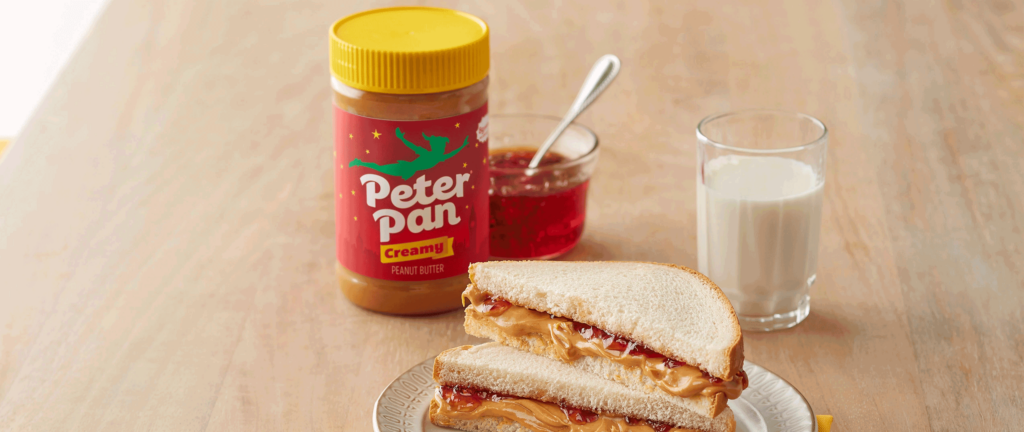You love the creamy, nutty flavor of Peter Pan Peanut Butter spread on toast, mixed into smoothies, or just straight from the spoon. But have you ever wondered how your favorite peanut butter is made? We’re excited to invite peanut butter lovers like you on a journey – from field to the jar – exploring how this beloved nut butter and accessible source of protein comes to life.
The History of Peanut Butter
Peanut butter, as we know it today, has quite a history. It can be traced back to the Ancient Incan and Aztec people, who ground roasted peanuts into a paste.
Fast forward to the 19th and early 20th centuries, when an unknown St. Louis physician supposedly encouraged George A. Bayle Jr., a food products company owner, to process and package ground peanut paste as a protein substitute for people with poor teeth.
Planting and Plucking: The Peanut Process
Our journey begins in the southeastern U.S. and surrounding areas, where peanuts – the star ingredient in our Peter Pan nut butter – are cultivated. Unlike many other nuts that grow on trees, peanuts grow underground.
From Peanuts to Perfect Paste
Once harvested, the peanuts are turned into butter through a detailed, four-step process: roasting, blanching, grinding, and mixing. This process requires skilled workers with technical machinery knowledge to ensure the final nut butter has the nutty flavor and spreadable texture you know and love.
- Roasting – raw peanuts are roasted in a large oven. Peanuts are cooled quickly with fan-circulated air when they reach their optimum flavor and color.
- Blanching – A blancher removes the outer skin from the peanuts. This is usually done by steaming the peanuts for a few minutes. The peanuts are then cooled, split, cleaned, and sorted.
- Grinding – The prepared peanuts are crushed in two stages to avoid generating too much heat, which can reduce flavor quality. The first stage reduces them to a chunky paste.
- Mixing – Additional ingredients, such as sugar and salt, are mixed in during the second grinding stage. This final process transforms the peanuts to the familiar, smooth peanut butter texture before final packaging.
Nutty For Peter Pan Nut Butter
Peter Pan Peanut Butter, first introduced in 1928, is the third most popular branded peanut butter worldwide, purchased by about 45 million consumers yearly. We anticipate shipping over 60 million pounds of peanut butter and peanut spread varieties in 2023 as a testament to its popularity.
Stick With Us for More Peanut Butter Fun
Peter Pan Peanut Butter is more than just a tasty treat. It’s a product with a rich history, a commitment to quality, and a loyal following of nut butter lovers. So whether you’re a fan of our Peter Pan Creamy, Honey Roast, or one of our other four varieties, we’re proud to bring you a product enjoyed for generations.
Peter Pan Peanut Butter is not just about the delicious taste; it’s about sustainability, responsible sourcing, and the hard-working people behind every jar. So, join us on this journey, and let’s continue to spread the love of Peter Pan Peanut Butter together!
Post Consumer Brands is home to your favorite grocery brands, from peanut butter to breakfast cereal! Explore familiar favorites or try something new.
